Stuart Forster reports from Bowes in County Durham, the village that’s home to Bowes Castle and provided author Charles Dickens with inspiration for one of his novels.
Disclosure: Some of the links below and banners are affiliate links, meaning, at no additional cost to you, I will earn a commission if you click through and make a purchase.
Bowes, in Upper Teesdale, has a surprisingly rich history for a quiet English village. It is located on the edge of the North Pennines Area of Outstanding Natural Beauty.
One of Bowes’ claims to fame is that it provided Charles Dickens with the inspiration for aspects of his novel Nicholas Nickleby. Dickens found inspiration for Dotheboys Hall and Wackford Squeers, his quirky one-eyed schoolmaster, at Bowes in the 1830s.
Throughout northeast England, Bowes is a name primarily associated with the French chateau-style stately home designed by Jules Pellechet. That grand building is the location of The Bowes Museum.
Only a handful of people immediately think of the village in Teesdale.
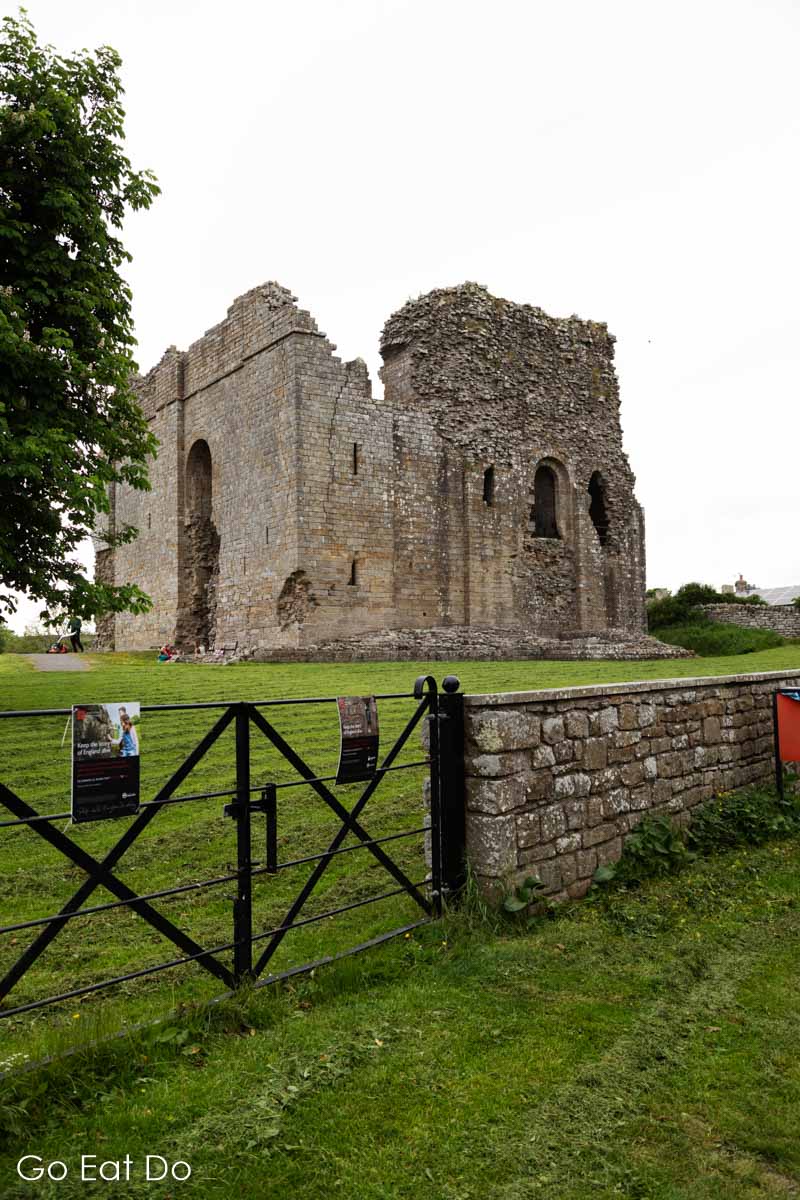
Bowes in County Durham
The village is in the Durham Dales. The surrounding countryside is demarcated by dry stone walls and characterised by the gentle bleating of sheep.
I visited Bowes on a winter’s day. A hoar frost whitened the winter landscape.
A fire glowed and crackled in the hearth of the Ancient Unicorn Inn. Warming by the fire, people conversed in the low-beamed room, oblivious of the cold outside.
It proved easy to imagine how the Ancient Unicorn may have felt when Dickens came here for lunch. He was researching conditions of North Yorkshire’s private academies ahead of writing Nicholas Nickleby.
The Ancient Unicorn was built as a coaching inn in the sixteenth century when the Stainmore Pass was an important trade route. Inevitably, being a building with a long history, rumours exist that the premises are haunted.
Staying in a haunted house?
“From time to time we let paranormal investigators come to stay, and they said that the place is haunted, but I myself haven’t seen anything,” commented Joanne Foster, a former landlady of the Ancient Unicorn.
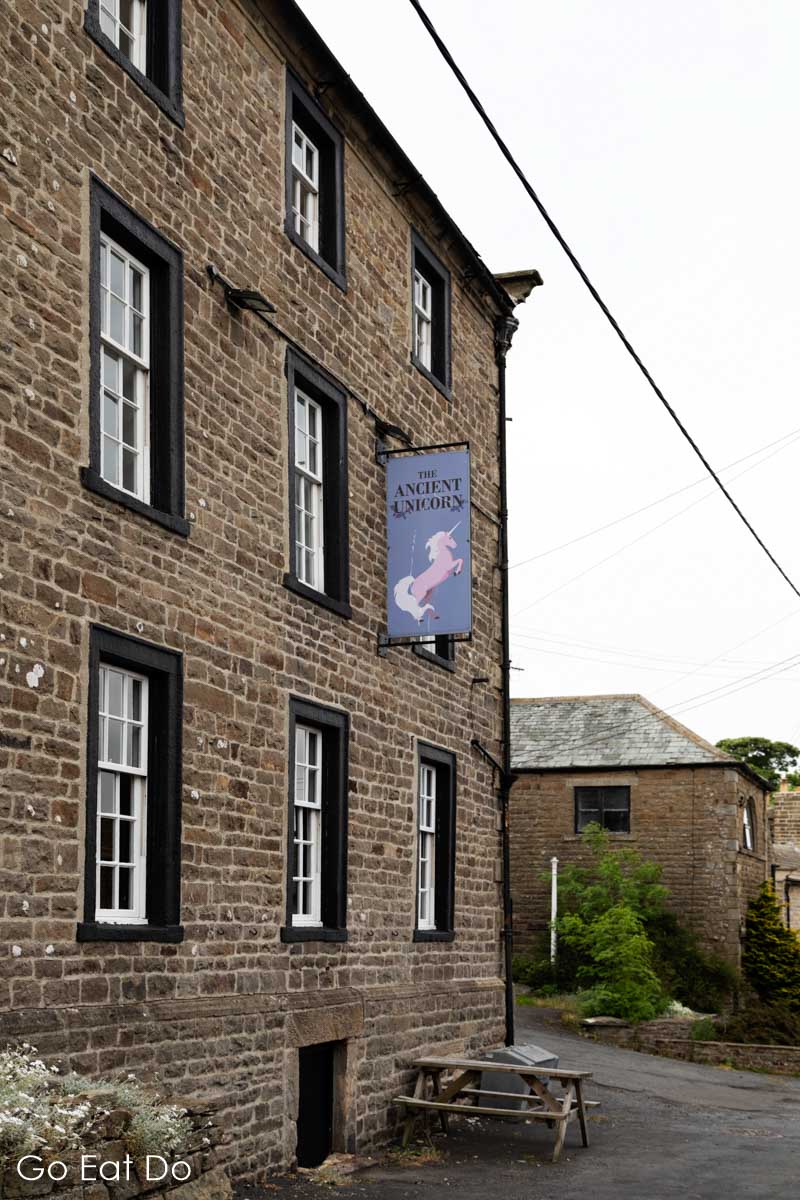
Joanne recalls that one woman was convinced of the reality of the haunting: “She thought she’d seen the ghost of a girl, but it all sounds rather fanciful to me. People who stayed with us said they’d been in the cellar and met a little boy who’d been thrown down there as punishment and wasn’t allowed back out, so apparently, the cellar’s haunted by a little boy. They’d also seen a woman who wore a big grey, smock-like Victorian dress. But I’ve slept in all the rooms and I’ve never seen anything.”
The inn is ideally located for walkers resting between stages of the Pennine and Teesdale Ways, which converge at Bowes.
Perhaps fresh air and exercise help ensure a good night’s sleep, despite the occasional bump in the night?
Roman history in County Durham
Stephen Roberts moved to Bowes from West Yorkshire, becoming a director of Hidebound, a local company producing leather drinking vessels based on designs from bygone times.
“I now thoroughly enjoy the rural lifestyle and, quite frankly, we have absolutely beautiful countryside scenery,” commented Stephen of Bowes.
Knowledgeable about local history, Stephen has found pottery fragments while digging in his garden. He suspects they may date from Roman times.
Remains of Lavatrae Roman Fort are on the edge of the village. The fort once covered four acres.
According to Stephen, the name Lavatrae is significant. “It is a fort which had Roman baths. The Roman plunge pool is still here, and you can see it, where the legionnaires would be sent, effectively, on leave. Almost a Roman legionnaires’ holiday camp,” he says laughing.
Bowes Castle and medieval sieges
Another ancient monument, Bowes Castle occupies the northwest corner of land where Lavatrae Roman fort once stood. The keep dates from the 1170s. Today managed by English Heritage, the castle is free to visit.
The castle’s history dates from 1087. It was constructed for the earl of nearby Richmond, the town in North Yorkshire. It was only during the county boundary changes of 1974 that Bowes left Yorkshire to become part of County Durham.
Bowes Castle was strategically important, controlling cross-Pennine trade. The fortress was besieged several times during the Middle Ages.
One of the besieging armies was led by King William of Scotland during his campaign of 1174. Robert the Bruce led Scottish armies southwards between 1314 and 1322.
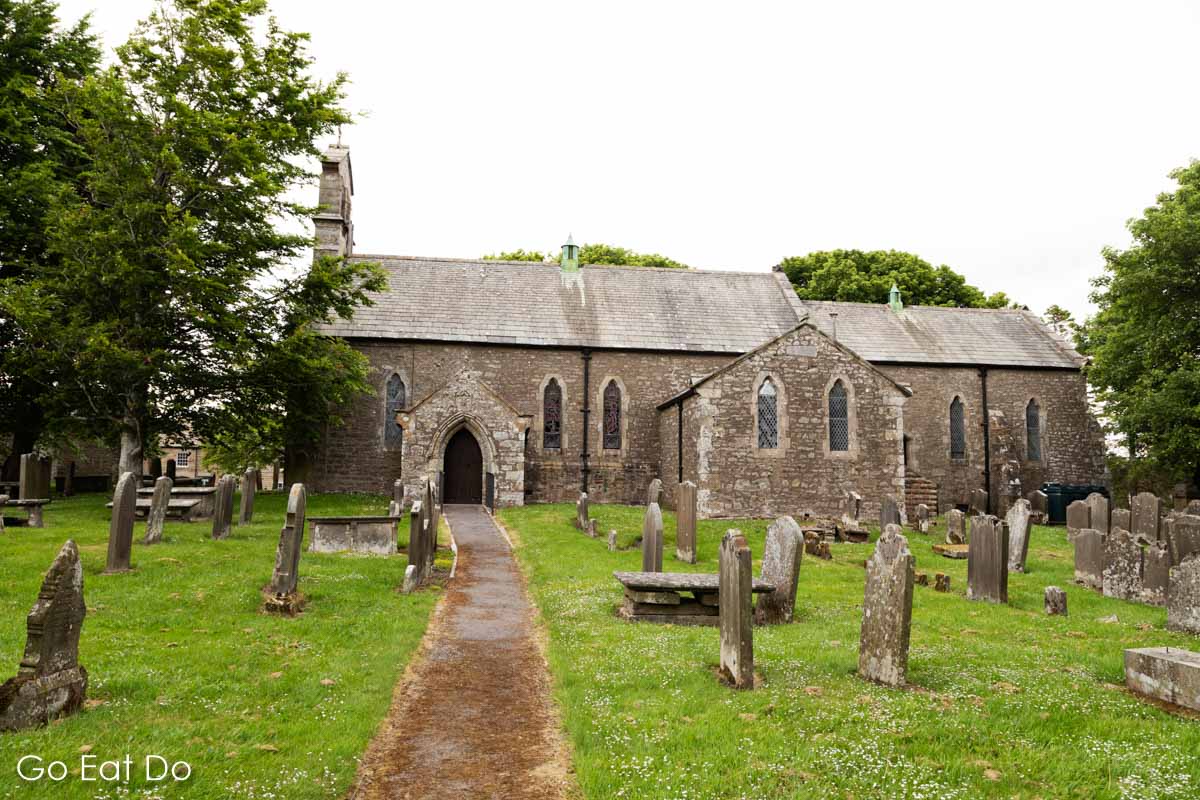
Bowes’ St Giles churchyard holds the grave of William Shaw, the local schoolmaster who reputedly inspired Charles Dickens’ character Wackford Squeers.
Beaten by more than 170 years of Pennine weather, the headstone now bears a worn inscription. Shaw ran his academy at a building on the west of the village that now bears a wooden Dotheboys Hall plaque.
As Dickens himself found, Bowes may be relatively small but it’s not short of a story or two.
Things to do in Bowes
Bowes is a good base for hiking and is renowned as a good stopping point for walkers heading along the Pennine Way. It’s also well-placed for those striding out on the Teesdale Way.
Day trippers keen on shorter walks can park up in Bowes and follow footpaths from the village. A relatively sedate 7.5-mile route leads via Gilmonby, God’s Bridge and Sleightholme.
Anyone looking for more of a challenge is likely to enjoy the 12-mile route past God’s Bridge, Race Yate, Goldsborough and Levy Pool.
Nearby Egglestone Abbey is about 4.5 miles from Bowes, making it an ideal destination for a circular walk in Teesdale.
If walking isn’t your thing, you can always get on your bike and cycle to Bowes. The County Durham village is on the W2W Cycle Route which runs from Walney to Wearmouth (153 miles) and also to Whitby (172 miles).
High Force is one of the major nearby attractions. Viewing the free-flowing springtime water crashing down over England’s highest waterfall can easily be combined with a visit to Bowes.
Barnard Castle holds a Farmers’ Market on the first Saturday of the month. How about shopping early and enjoying a market day visit to Bowes?
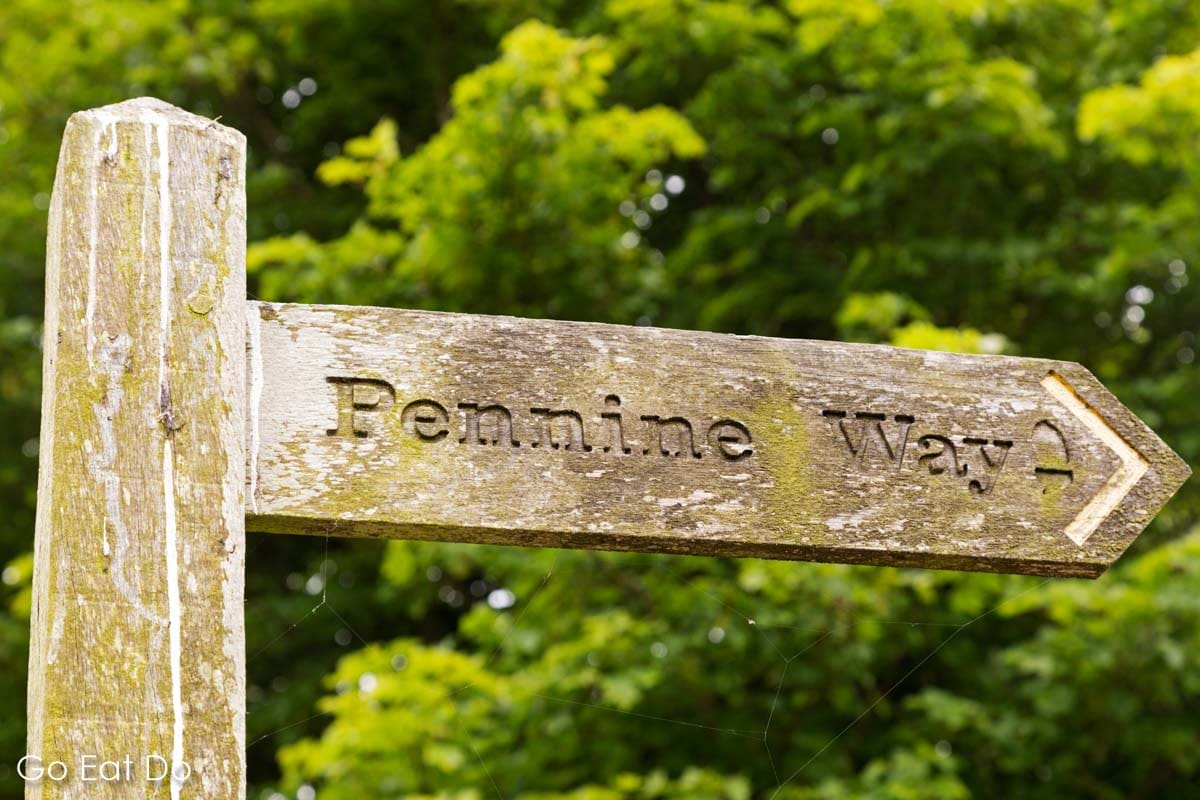
Accommodation in Bowes
The Ancient Unicorn offers rooms in a 16th-century building that was formerly a coaching inn. Author Charles Dickens and artist William Turner count among guests who have stayed at The Ancient Unicorn over the years.
Search for hotels in County Durham, including accommodation in Bowes and the surrounding area via Booking.com:
Booking.com
Map of Bowes, County Durham
Bowes is four miles southwest of Barnard Castle, at the junction of the A66 and A67.
The Google Map below shows the location of the County Durham village of Bowes next to where the A66 and A67 merge:
Google Map showing Bowes in County Durham
Books about Teesdale
Planning to visit Teesdale and the North Pennines? You may find the following books interesting and informative:
Charles Dickens’ Nicholas Nickleby:

Teesdale and Weardale: Short, Scenic Walks:

Barnard Castle and Teesdale Through Time:

Secret Barnard Castle and Teesdale:

Cicerone’s Walking in the North Pennines: 50 Walks in England’s Remotest Area of Outstanding Natural Beauty:

Further information
To book a night at the Ancient Unicorn Inn call 01833 628576. Find out more about attractions across County Durham on the This is Durham website.
For information on destinations elsewhere in Great Britain see the Visit Britain website.
Photos illustrating this post are by Why Eye Photography.
Stuart Forster, the author of this post, is an award-winning travel writer from northeast England.
Thank you for visiting Go Eat Do and reading this post about Visiting Bowes Castle and Bowes in County Durham. Interested in the industrial heritage of North East England? Take a look at this article about the Durham Miners’ Gala. Why not time a visit to Bowes when visiting the Lumiere Durham festival of lights.
If you enjoyed this post why not sign up for the free Go Eat Do newsletter? It’s a hassle-free way of getting links to posts on a monthly basis.
‘Like’ the Go Eat Do Facebook page to see more photos and content.
A version of this post was first published on Go Eat Do on 30 March 2013.
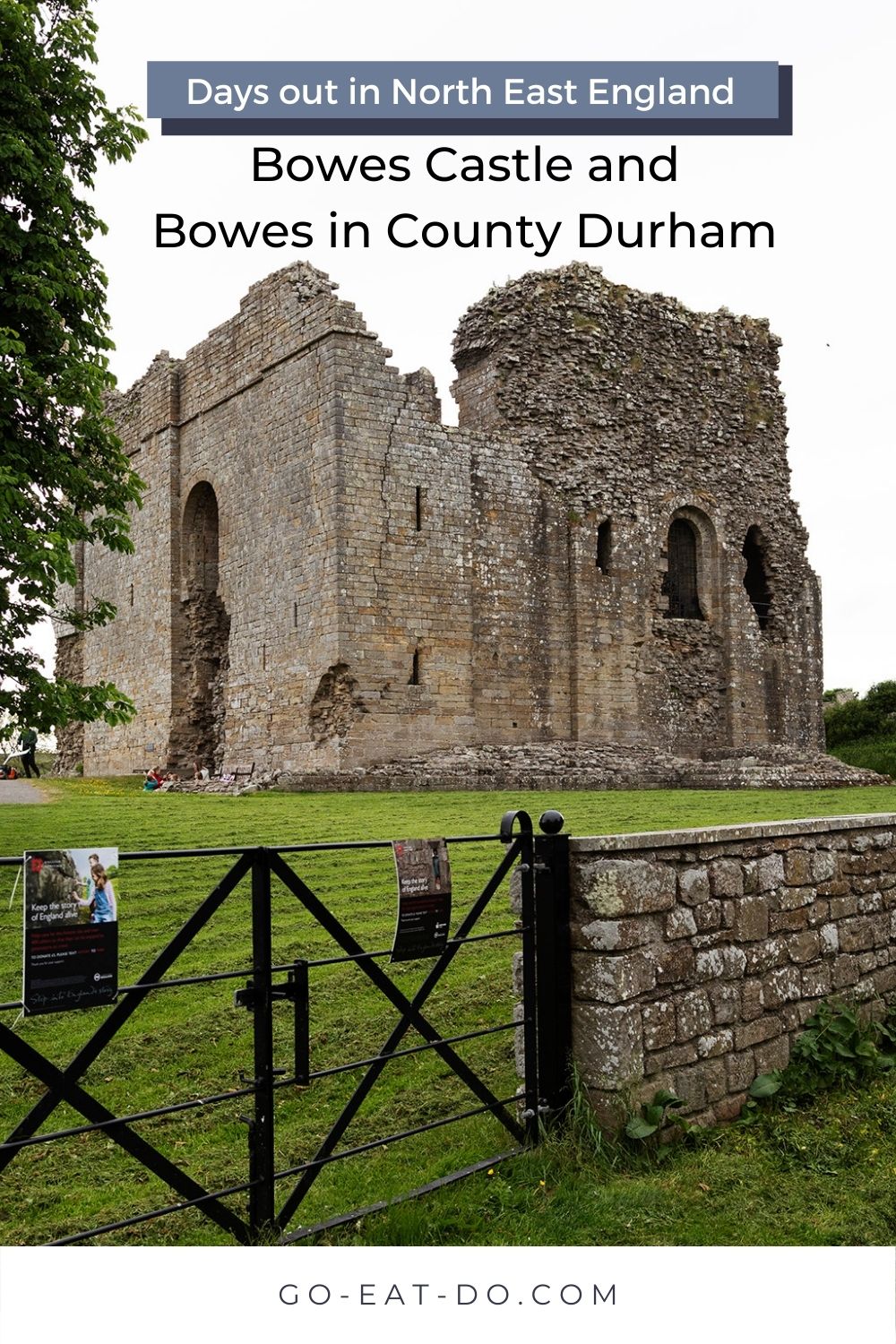




Robert Sparks
December 21, 2017 at 06:02Dickens is one of my favourite authors. Looks like I’ll be driving up to Bowes in the springtime to take a look and to see the High Force waterfall in full flow.
Stuart Forster
December 21, 2017 at 08:43Excellent. Enjoy!
Robert Parker
January 8, 2018 at 07:53Never mind Charles Dickens, I love the idea of spending a night in a haunted hotel.
Stuart Forster
January 9, 2018 at 11:14Here’s to you sleeping well and enjoying the area.